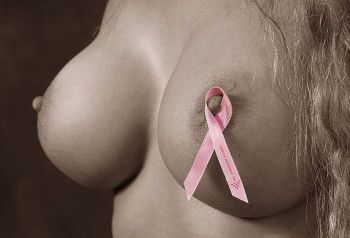Breast Health Checks
Posted on
| Breast Cancer Awareness: The Importance of Self-Checks |  |
It's been a while since I did a reminder about breast health and checks, so it's time for a refresh. Breast cancer is one of the most common cancers affecting women worldwide, with early detection being absolutely crucial in improving treatment outcomes and survival rates. Regular breast self-examinations are a simple yet important step in increasing awareness of your body and potentially catching any concerning changes early on.
Why Breast Self-Checks Matter
- Familiarity with your body: Self-checks help you understand what feels normal for your breasts. This makes it easier to spot any potential changes or abnormalities.
- Early detection: While self-checks don't replace professional mammograms, they can play a role in finding breast changes early when treatment may be most successful.
- Empowerment: Taking charge of your own breast health can be empowering and reassuring.
How to Perform a Breast Self-Check
Here's a step-by-step guide:
-
Visual Check:
- Stand in front of a mirror with your shoulders straight and arms at your sides.
- Look for any changes in the size, shape, or color of your breasts.
- Check for any dimpling, puckering of the skin, unusual redness, or nipple discharge.
- Repeat with your arms raised above your head.
-
Lying-Down Check:
- Lie down on your back and place a pillow under your right shoulder.
- Use your left hand to examine your right breast. Use the pads of your three middle fingers, moving in small circular motions with varying levels of pressure (light, medium, firm) to feel all the breast tissue.
- Start at your armpit and slowly sweep across to your cleavage, then move down to the edge of your ribs. Continue this in an up-and-down pattern until you've covered your entire breast.
- Repeat on your left breast, using your right hand.
-
Shower Check:
- The warmth and wetness of the shower can make it easier to feel your breast tissue.
- Using a soapy hand, use the same technique as the lying down check to examine both breasts.
What to Look For:
- New lumps or thickening in your breast or armpit
- Change in breast size or shape
- Changes to the skin of the breast – dimpling, rashes, redness
- Nipple changes - inversion (turning inward), unusual discharge
Important Reminders
- Frequency: Many experts recommend performing breast self-checks monthly.
- Timing: It's ideal to do self-checks a few days after your period ends, when breasts are likely to be less tender.
- Don't Panic: Most breast changes are not cancer. However, if you notice anything unusual, consult your doctor promptly. Don't self-diagnose, seek professional evaluation.
Beyond Self-Checks
While breast self-checks are important, they are just one piece of the puzzle. Remember:
- Mammograms: Regular mammograms, as recommended by your doctor based on age and risk factors, are the gold standard for breast cancer screening.
- Listen to your body: Report any new, persistent changes in your breasts, even if not found on a self-check, to your healthcare provider.
Let's Spread Awareness
Share this information with the women in your life! Early detection saves lives.
Disclaimer: This blog is for informational purposes only. It is not a substitute for professional medical advice. Always consult your doctor about breast health concerns and appropriate screening schedules.

Add a comment: